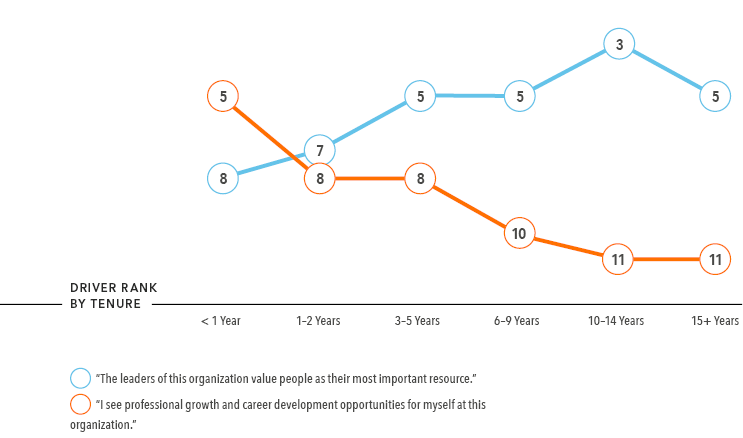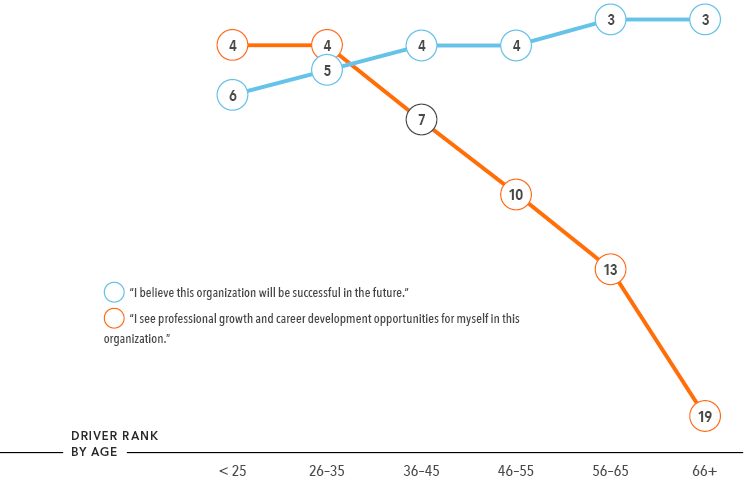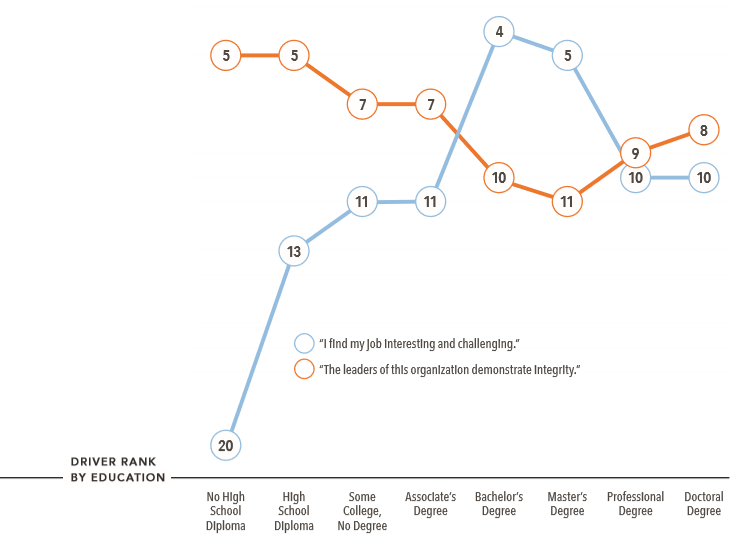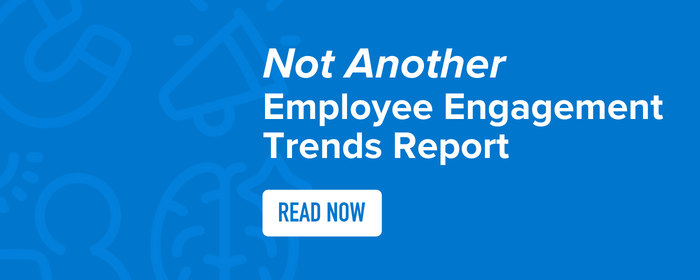Managing Individual Differences in the Workplace
People are constellations of multiple identities: personal identities like age, height, weight, gender, race, country of origin, religious affiliation, familial status, level of education.
personal identities like age, height, weight, gender, race, country of origin, religious affiliation, familial status, level of education.
And organizational identities like the industry they work in, the size of their organization, and their own tenure, department, or position level.
These barely scratch the surface of how many individual differences a person may have or express at any given time, and that’s not even taking into account things like preferences, biases, and opinions.
With as many factors as the above lists suggest, it boggles my mind when “one size fits all” engagement strategies are discussed or, worse still, considered as legitimate courses of action within organizations. Different employees need different things to be engaged, and painting people with large brush strokes does not create organizational or team environments that maximize engagement. Instead, organizations must prioritize accepting and managing individual differences.
Using data from Quantum Workplace’s annual Employee Engagement Trends Report, I want to present a few examples of individual differences between employee groups. For each demographic, a breakout of 2-5 drivers of engagement will be shown.
Tenure

The above graph shows that professional growth and career development opportunities becomes a weaker driver of engagement as employees become more tenured. Conversely, believing leaders value people as their most important resource generally becomes a stronger driver of engagement as employees become more tenured.
This suggests that less-tenured employees may feel more engaged when growth opportunities are clearly visible to them, whereas more-tenured employees may feel more engaged when they believe leadership values them.
This isn’t to say that more-tenured employees don’t value professional and career developmental, or that less-tenured employees don’t appreciate a leader's recognition. Rather, these results indicate that individual differences determine what actions will engage employees.
For another analysis of tenure, see research I conducted exploring the tenure curve.
Pay Type

When examining employees by pay type, four out of the five top drivers of engagement are similar. However, the main difference is arguably a large one: being recognized is a stronger driver of engagement for hourly employees than salaried. This indicates that even an individual difference like pay type is important to accept and manage.
Age

The above graph suggests that seeing professional growth and career development opportunities becomes a weaker driver of engagement as employees age.
This, when coupled with the results from tenure, makes intuitive sense; as employees age and become more tenured and experienced, they get closer to their natural career ceiling — a senior leadership position, retirement, being satisfied with what they’ve achieved, etc.
Conversely, believing the organization will be successful in the future only strengthens as a driver of engagement as employees age. Older employees having a higher probability of being more tenured, suggesting that they may also feel more invested in the success of the organization, or that organizational success goes hand-in-hand with how strongly connected they feel to the organization.
Education Level

In this final example, although there isn’t a perfectly clean upward or downward line, we can see that perceived leadership integrity is a stronger driver of engagement for employees with less education (high school diploma or less), and is a weaker driver for employees with mid-level education (Bachelor’s and Master’s degrees).
Likewise, finding one’s job interesting and challenging is a weaker driver of engagement for all education levels except those with Bachelor’s and Master’s degrees.
One takeaway from this graph is that employees without high school diplomas likely feel more engaged when they can trust and respect their leaders, whereas employees with Bachelor’s and Master’s degrees likely feel more engaged when they have jobs that are interesting and challenging.
Conclusion
There may be a certain level of irony in this post; in the beginning I indicated that employees shouldn’t be generalized by large groupings, yet I used relatively large groupings as examples.
My intent was not to offer highly individualized examples, but instead to showcase high-level differences that can guide managers and organizations toward greater individualization.
It’s not that a team member is just a female, or just has 1-2 years tenure, or is just a salaried employee, all in isolation of one another. Rather, she’s a female employee who has 1-2 years tenure and is salaried, among the dozens and dozens more identities, opinions, and preferences that are of varying relevance to her work.
Bottom line? Managers must strive to know employees at a personal and professional level, allowing them to understand, accept, and manage individual differences. This, then, can pave to way for performance excellence and high employee engagement.
Learn about more employee populations and individual differences — download our annual Employee Engagement Trends Report today!






